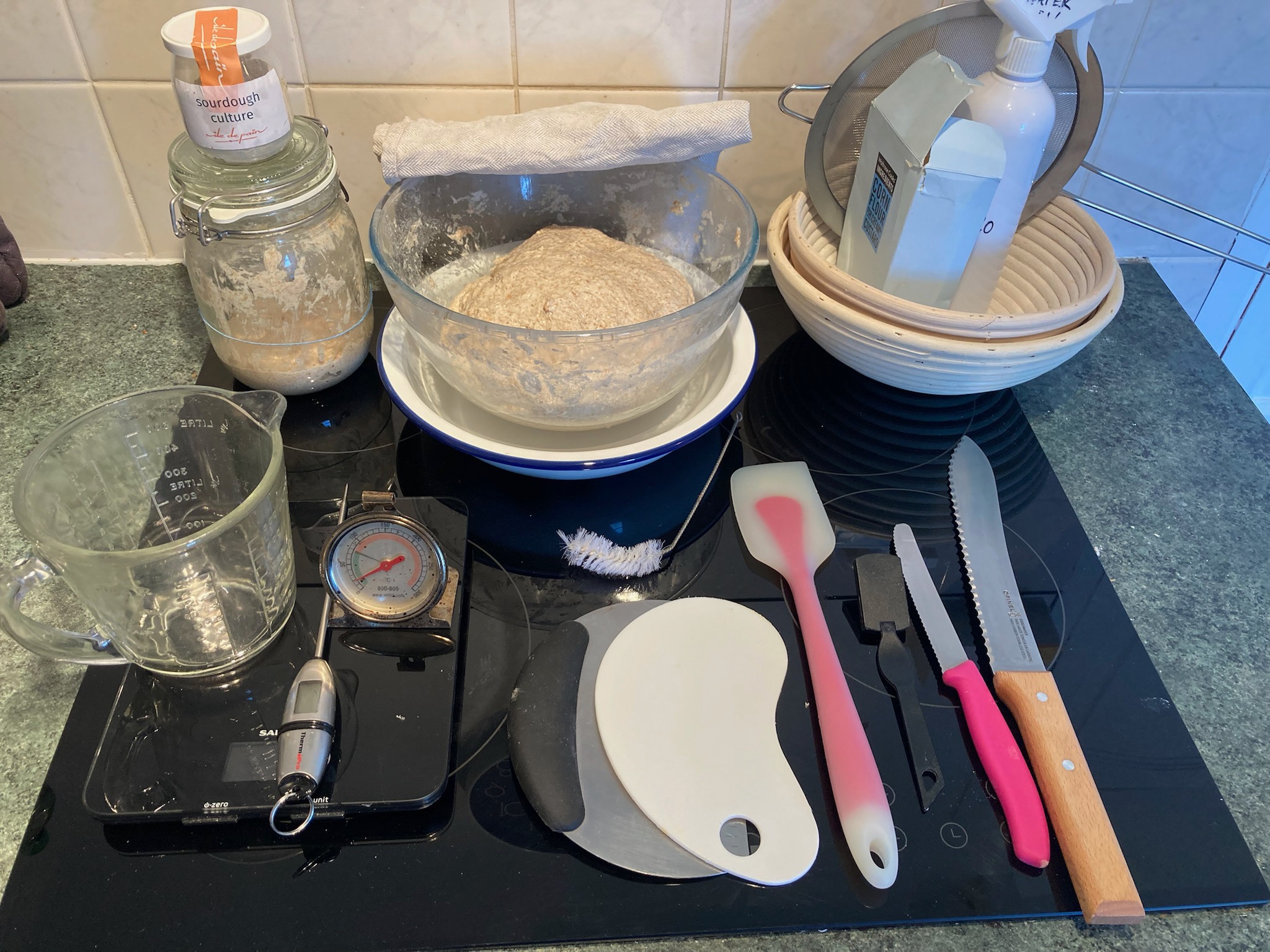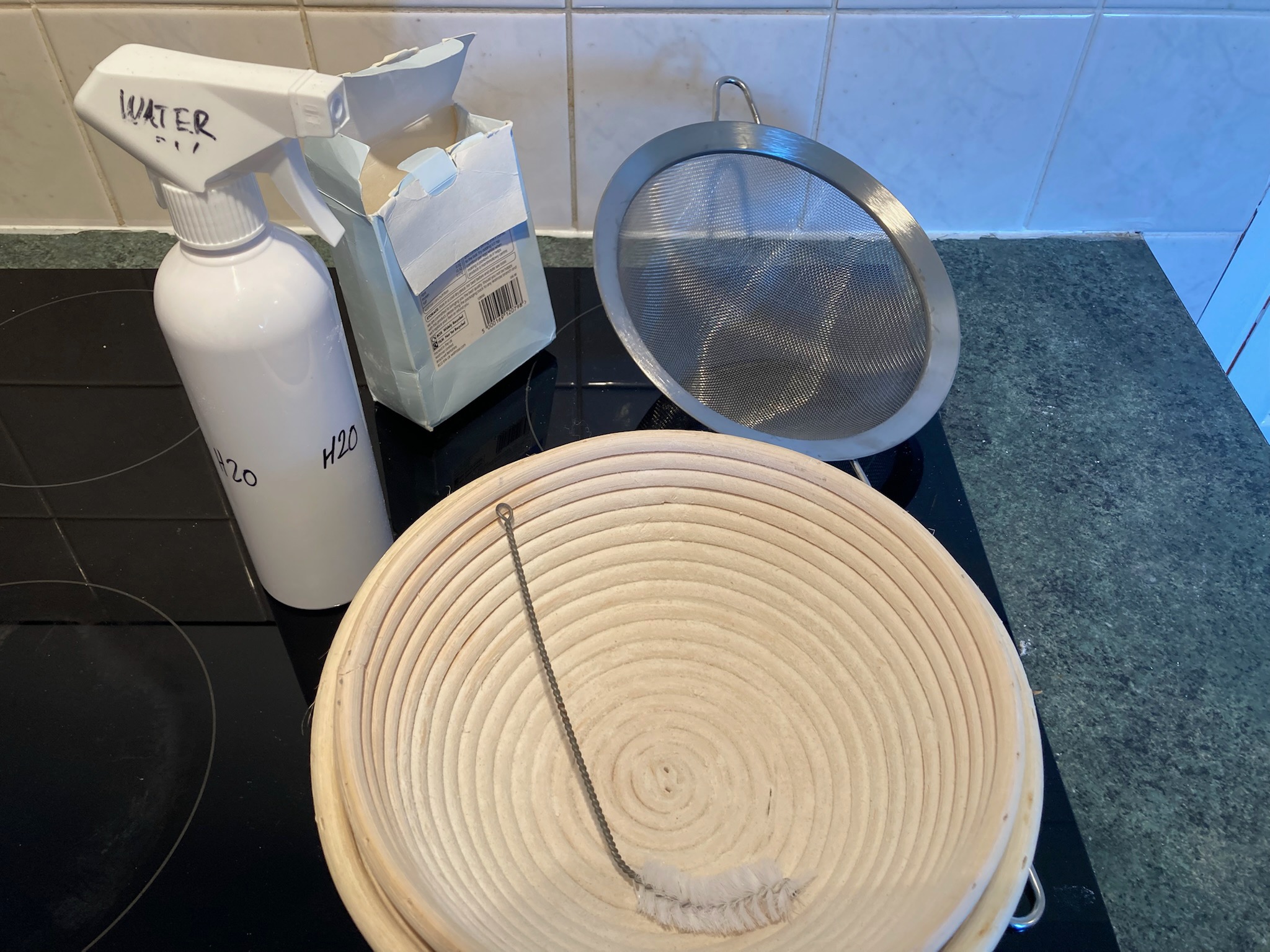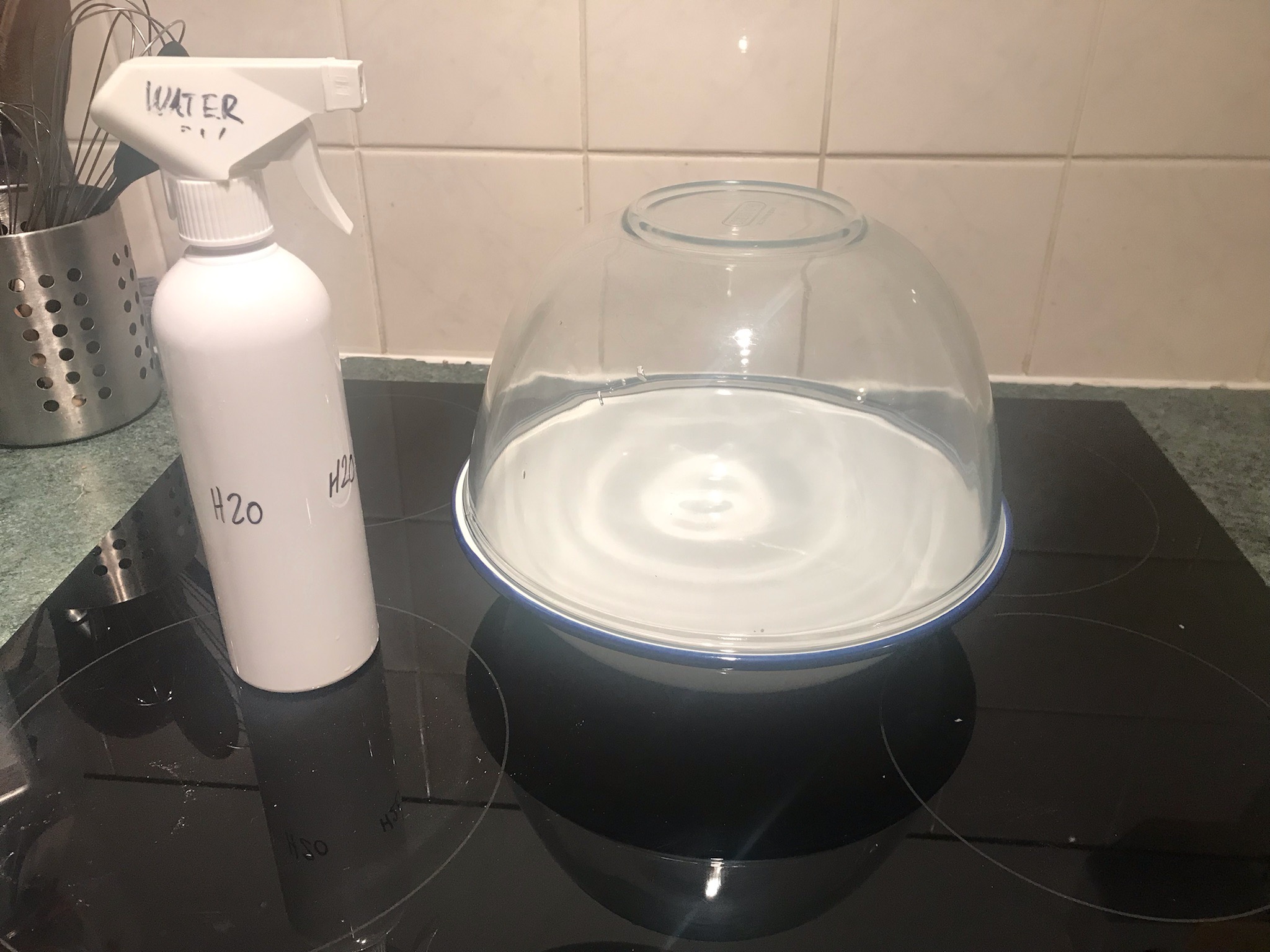Baking Bread
I haven’t perfected this but have got to a point where I can predictably bake a very nice reasonably attractive looking sourdough. I try to do 2 or 3 a month but usually manage 1 or 2. Ideally I manage to make bread on a slower Friday for the weekend.
Start out with making a starter, then have a go at the basic sourdough which doesn’t require any additional equipment. If that was enjoyable, then the seeded sourdough is my recommendation for a reliable tasty recipe for consistent baking, and my go to. Requires a few bits of equipment, which I can recommend investing in if you have baked a few loaves and want to continue. Most valuable is the banneton, linen, pyrex dish and baking dish, but a good scale and especially an oven thermometer will remove a lot of uncertainty.
Equipment
- Banneton (bowl shaped)
- Banneton dusting flour (rice flour, even corn flour, as regular flour sticks)
- Linen cloth (doesn’t stick)
- Large Pyrex bowl (mixing and as baking lid, perfect)
- Oven proof metal dish (needs to form a good seal with the pyrex)
- Scale (5kg+)
- Oven thermometer (your oven temp will vary 30-40 degrees or more!)
- Food thermometer (useful for starter maintenance)
- metal bench scraper (if you struggle to work with dough)
- plastic bench scraper (getting the dough out of the mixing bowl gently)
- Sharp Knife (scoring the dough)
- Water spritzer (useful to get an even moisture on the dough)
- Space in the fridge!
- Big starter jar (prevents overflows and makes mixing easier)
- spatula (for mixing the starter)
- Water measuring jar (allows accurate pouring)
- Bread knife (your bread deserves a sharp knife)
- Bottle brush (banneton maintenance)



Key tips / tests
- Water: filtered lukewarm water I think makes a big difference to the starter and the bread. London water tastes crap and I’m sure isn’t great for baking unfiltered. I leave the water out before mixing into the dough (to warm up and let the chemicals evaporate?? idk)
- Starter health: Be clean and careful when working with your starter. A wayward bit of yoghurt or licked spoon can ruin it, so always try and keep a semi-active portion apart from your main feeding starter.
- Float test. Check if your starter is active enough to bake (it becomes pretty clear when it is active anyway), a spoonful will float.
- When mixing and proving, the stretch and folds and proving can be varied but try to get a feel for the dough through this step.
- Poke test. This is crucial to get familiar with the stage of proving. When doing the longer bulk ferment step, check the bread with the poke test to see how it bounces back initially and then later on it doesn’t as much.
- Wetting hands makes shaping much easier, but don’t introduce too much water into the mix. If you’re struggling, try wet hands.
- Pre-Shaping and shaping - very important not to overwork the dough, and also quite tricky yo get it to shape nicely.
- Figure out your ovens thermometer settings (requires an oven thermometer). Typically the oven will reach the temp and then turn itself off until it drops 30c or more below that temp and then turn the heating element on again. This means if you get the timing wrong, you’ll have an oven temp way too low. Especially important when you are initially putting the bread into the oven, because you’ll have twice opened the oven (get the pre-heated dishes and then putting the bread into the oven), and if you do this as the element goes off, it may take 5min for it to go back on in which time you’ll be down to 180 which is way too low!
- Capturing moisture in the oven is the most important part after getting the temperature right, and this can be achieved in many ways (I like the lid and water spritz), but without it you will have a hard time. Equally beneficial is that the lid keeps your bread from burning at the high heat.
- Putting the bread in the fridge gives you a chance to bake the bread when convenient, up to 48hrs is still viable. Apparently you can also par-bake a bread and then store (Bread Code on youtube)
- Don’t cut it open straight away unless you’re going to eat it straight away, slice it and freeze it if you won’t eat it in 12-24hrs, and if you are going to eat it that day, try reduce air exposure to prevent it going stale.